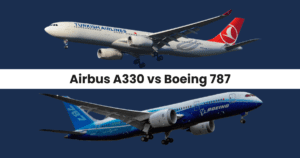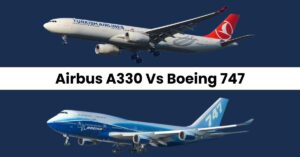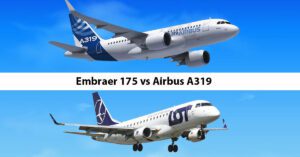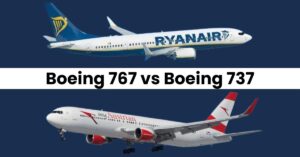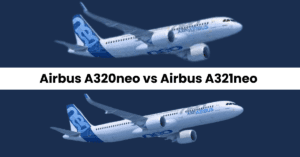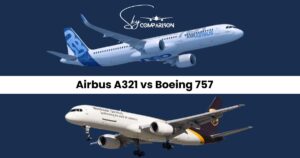Airbus A380 vs Boeing 787 | Passenger Comfort and Design
Take a closer look at two of the biggest names in flying: the Airbus A380 vs Boeing 787 Dreamliner. Each plane is special in its own way, changing how we fly long distances. We’re going to explore what makes these planes stand out, from how they’re built to how many people they can carry, how they save fuel, and how comfortable they are for passengers. Whether you love airplanes or just like to travel, learning about these two will make your next flight even mokire interesting.
Airbus A380 vs Boeing 787
When comparing the Boeing 787-9 Dreamliner with the Airbus A380-800, we’re looking at two aircraft designed with different philosophies in mind. The Boeing 787-9 is a highly efficient, long-range aircraft that represents the latest in aviation technology aimed at connecting cities with direct routes. The Airbus A380-800, however, is the epitome of capacity and luxury, designed to be the workhorse for the world’s busiest international routes. Let’s break down their specifications side by side for a clearer comparison.
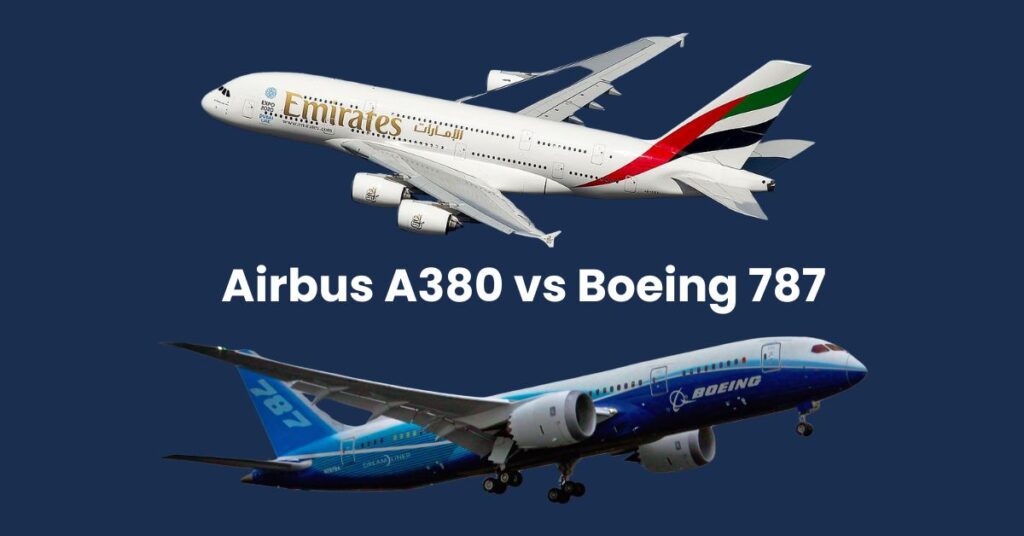
Let’s integrate the additional detailed specifications of both the Boeing 787-10 Dreamliner and Airbus A380-800 into the previous comparison table for a more comprehensive overview.
This detailed comparison highlights the technological, operational, and capacity differences between the Boeing 787-10 Dreamliner and Airbus A380-800, providing a clear understanding of their distinct roles in modern aviation.
This comparison illustrates the distinct roles these aircraft play in the aviation world. The Boeing 787-9 Dreamliner is built for efficiency and range, making it ideal for airlines looking to offer direct, long-distance flights with fewer passengers. Its design focuses on reducing fuel consumption and enhancing passenger comfort over great distances.
| Feature | Boeing 787-10 Dreamliner | Airbus A380-800 |
|---|---|---|
| Photo | United Airlines Boeing 787-10 Dreamliner | Qatar Airways Airbus A380-861 |
| Country | United States | France |
| Manufactured | From: 2015 to: Present | From: 2007 to: Present |
| ICAO | B78X | A380 |
| Price | $338.4 million | $445.6 million |
| Avionics | Rockwell Collins next generation avionics | Thales Rockwell Honeywell Combo |
| Engine | 2x Rolls-Royce Trent 1000 or GE GEnx-1B | 4x Engine Alliance GP7270 or Rolls-Royce Trent 900 |
| Engine Type | Turbofan | Turbofan |
| Power | 76,000 pound-force | 81,500 pound-force |
| Max Cruise Speed | 515 knots (954 Km/h) | 587 knots (1,087 Km/h) |
| Approach Speed (Vref) | 140 knots | 135 knots |
| Travel Range | 6,430 Nautical Miles (11,908 Kilometers) | 8,000 Nautical Miles (14,816 Kilometers) |
| Fuel Economy | 0.22 nautical mile/gallon (0.108 km/litre) | 0.1 nautical mile/gallon (0.049 km/litre) |
| Service Ceiling | 43,000 feet | 43,000 feet |
| Rate of Climb | 3000 feet/minute (15.24 m/s) | 1500 feet/minute (7.62 m/s) |
| Take Off Distance | 2800 metre (9,186.24 feet) | 2749 metre (9,018.92 feet) |
| Landing Distance | 1520 metre (4,986.82 feet) | 1524 metre (4,999.94 feet) |
| Max Take Off Weight | 254,011 Kg (559,993 lbs) | 575,000 Kg (1,267,645 lbs) |
| Max Landing Weight | 201,848 Kg (444,994 lbs) | 395,000 Kg (870,817 lbs) |
| Max Payload | 57,277 Kg (126,273 lbs) | 87,000 Kg (191,800 lbs) |
| Fuel Tank Capacity | 33,399 gallon (126,429 litre) | 85,472 gallon (323,546 litre) |
| Baggage Volume | 190.3 m³ (6,720 ft³) | 190 m³ (6,710 ft³) |
| Seats – Economy | 440 seats | 853 seats |
| Seats – Business Class | 290 seats | 480 seats |
| Seats – First Class | – | 416 seats |
| Cabin Height | 2.5 metre (8.20 feet) | 3 metre (9.84 feet) |
| Cabin Width | 5.49 metre (18.01 feet) | 6.58 metre (21.59 feet) |
| Cabin Length | 62 metre (203.41 feet) | 50.68 metre (166.27 feet) |
| Exterior Length | 68.3 metre (224.08 feet) | 72.73 metre (238.61 feet) |
| Tail Height | 17.02 metre (55.84 feet) | 24.27 metre (79.63 feet) |
| Fuselage Diameter | 5.77 metre (18.93 feet) | 7.14 metre (23.42 feet) |
| Wing Span / Rotor Diameter | 60.12 metre (197.24 feet) | 79.75 metre (261.64 feet) |
| Wing Tips | Raked Wingtips | Wingtip Fences |
On the other hand, the Airbus A380-800 shines in its ability to transport a large number of passengers in comfort and style. Its sheer size and capacity make it perfect for very busy international routes, where demand justifies its use. Despite sharing the same cruise speed, the A380’s massive wingspan and double-deck design highlight its focus on maximizing passenger volume and comfort.
Each aircraft represents a different approach to tackling the challenges of modern air travel, with the Boeing 787-9 catering to efficiency and the Airbus A380-800 emphasizing capacity.
Airbus A380
The Airbus A380 stands out as a titan in the aviation world, holding the title of the largest passenger airplane globally. It’s a product of Airbus, the renowned aerospace manufacturer based in France, and took to the skies with its first set of passengers in 2007. Its remarkable size, characterized by two full-length decks, allows it to accommodate more passengers than any other plane, making it a marvel of modern engineering.
This aircraft can host up to 853 passengers in an all-economy layout. However, airlines typically configure the A380 with a mix of seating classes. This arrangement reduces the total number of passengers but increases comfort and luxury, offering amenities like lie-flat beds and even showers for those flying first class. It’s designed for ultra-long-haul flights, enabling non-stop travel across vast distances.
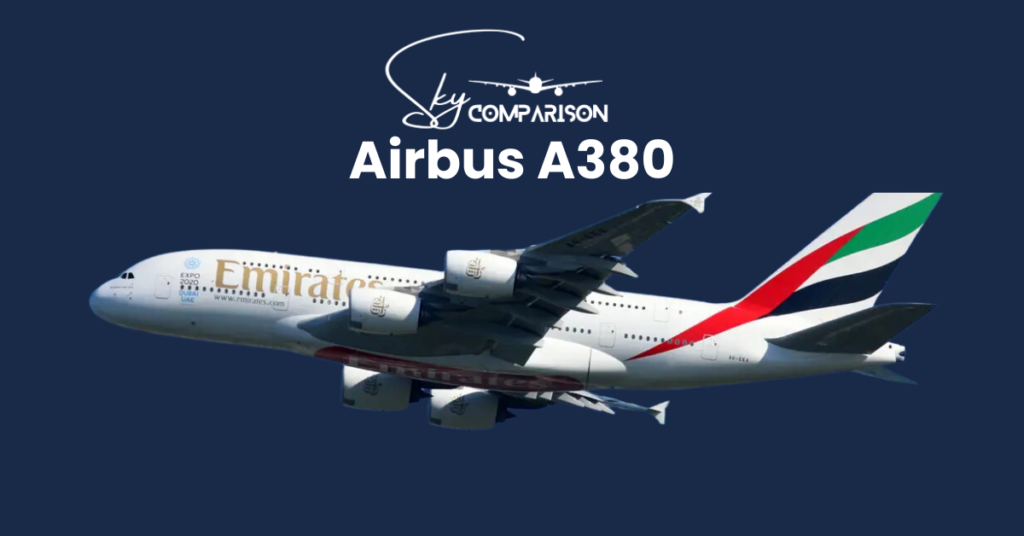
Despite its massive capacity, the A380 is praised for its quiet and smooth flight experience. It was initially a favorite among airlines for its ability to transport a large number of passengers directly between major international hubs. Yet, the costs associated with operating and maintaining such a large aircraft began to weigh on airlines.
Over time, the preference in the aviation industry shifted towards smaller, more fuel-efficient aircraft. This shift led Airbus to announce the cessation of the A380’s production in 2021, as demand from airlines dwindled. Despite this, the A380 continues to fly, serving as a testament to human ingenuity in aviation and gracing the skies on select routes worldwide.
Boeing 787
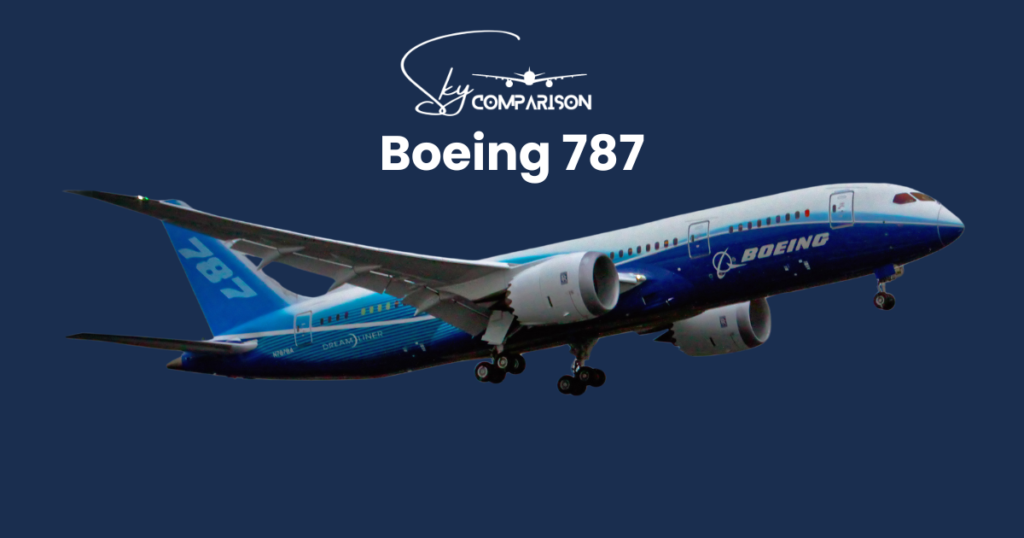
The Boeing 787, also known as the Dreamliner, is a modern marvel of aviation. It’s made by Boeing, an American company, and it’s special because it’s designed to be really efficient and comfortable for long flights. Unlike the huge Airbus A380, the 787 is smaller, but it uses advanced technology to save fuel, making it cheaper to run and better for the environment. The Dreamliner can carry between 242 to 330 passengers, depending on the model, and it’s known for its comfy seats, big windows, and cleaner air inside the cabin, which helps make flying feel nicer and less tiring. Airlines like it because it can fly long distances without stopping, but it’s not so big that it’s hard to fill with passengers. Since it first flew with passengers in 2011, the Boeing 787 has become popular all over the world for making long trips more pleasant.
Airbus A380 vs Boeing 787 Variants
The Airbus A380 vs Boeing 787 Dreamliner, both remarkable in their own right, come in different variants to meet the diverse needs of airlines around the world. The A380 was designed with sheer capacity in mind, intended to be the jumbo of the skies with only two main passenger variants: the A380-800, which is the standard model used by airlines globally. On the other hand, the Boeing 787 Dreamliner was designed for efficiency and flexibility, leading to three main variants: the 787-8, 787-9, and 787-10, each offering different balances of range and passenger capacity to suit various route lengths and market demands.
Let’s put this information into a simple table to see how these variants compare.
| Aircraft Variant | Description |
|---|---|
| Airbus A380-800 | The only passenger variant, designed for maximum capacity, can carry over 500 passengers with a range of up to 8,000 nautical miles. It’s perfect for very busy long-haul routes. |
| Boeing 787-8 | The smallest Dreamliner variant, offering the longest range of up to 7,355 nautical miles, suited for long-haul routes with fewer passengers. |
| Boeing 787-9 | A stretched version of the 787-8, balancing range and capacity with a range of up to 7,635 nautical miles and room for more passengers. |
| Boeing 787-10 | The largest Dreamliner variant with the highest passenger capacity but a shorter range of up to 6,430 nautical miles, ideal for busy medium to long-haul routes. |
Each variant caters to specific airline needs, from the A380’s massive passenger volumes to the 787’s range and efficiency options. The choice between them depends on the routes, passenger demand, and operational strategies of each airline.
Airbus A380 vs Boeing 787 Engines
When we compare the engines of the Airbus A380 vs Boeing 787, we’re looking at the heart of what makes these airplanes fly. The A380 is powered by four massive engines. Airlines can choose between two types: the Engine Alliance GP7200 or the Rolls-Royce Trent 900. These engines are incredibly powerful, designed to lift the A380, the world’s largest passenger airliner, filled with hundreds of people, and keep it flying smoothly across vast distances. Because the A380 has four engines, it’s built for strength and can carry more weight, but this also means it uses more fuel.
Airbus A380 Engines
The Airbus A380 is equipped with some of the most powerful engines in the world of commercial aviation. Customers have two choices for the engines that power this colossal aircraft: the Engine Alliance GP7200 or the Rolls-Royce Trent 900.
The Engine Alliance GP7200 is a product of a partnership between General Electric and Pratt & Whitney, combining the expertise of two of the biggest names in aerospace engineering. This engine is known for its reliability, fuel efficiency, and impressive performance, making it a popular choice among A380 operators.
The Rolls-Royce Trent 900, on the other hand, comes from the renowned Trent family of engines, which have a long history of powering wide-body aircraft. The Trent 900 boasts advanced technology that reduces fuel consumption and emissions while providing the power needed to lift the massive A380 into the sky.
Boeing 787 Engines
The Boeing 787 Dreamliner, known for its efficiency and advanced technology, is powered by two cutting-edge turbofan engines. Airlines have a choice between the Rolls-Royce Trent 1000 and the General Electric GEnx-1B engines. Both engines are designed to offer exceptional fuel efficiency, reduced emissions, and lower operating costs, aligning with the Dreamliner’s goal of transforming long-haul flying into a more economical and environmentally friendly experience.
The Rolls-Royce Trent 1000 engine is part of the Trent family, known for their reliability and performance. It has been specifically tailored for the 787 Dreamliner, offering significant fuel savings and reduced noise levels, which contribute to the aircraft’s overall efficiency and passenger comfort.
The General Electric GEnx-1B engine represents a leap forward in engine technology. It uses lightweight materials and advanced design techniques to provide similar benefits in fuel efficiency and noise reduction. The GEnx-1B is notable for its composite fan blades and the innovative twin-annular pre-swirl (TAPS) combustor that significantly lowers NOx emissions.
Design and Purpose
Airbus A380: Known as the superjumbo, the A380 is the world’s largest passenger airliner. It was designed for long-haul flights, capable of carrying a large number of passengers over significant distances. Its double-deck configuration allows for a wide range of seating arrangements, from standard economy to luxurious first-class suites.
Boeing 787 Dreamliner: The 787, on the other hand, is a wide-body jet that emphasizes efficiency over capacity. Its design focuses on using advanced materials, such as carbon fiber composites, to reduce weight and improve fuel efficiency. The Dreamliner is intended for long-haul flights as well, but its smaller size allows it to operate routes that are not viable for larger aircraft like the A380.
Capacity and Range
Airbus A380: With a typical seating configuration, the A380 can carry between 525 and 853 passengers, depending on the class layout. It has a maximum range of about 8,000 nautical miles, allowing it to fly nonstop from New York to Singapore.
Boeing 787 Dreamliner: The 787 comes in three variants (-8, -9, and -10), with passenger capacities ranging from 242 to 330 in a standard three-class configuration. Its range varies from 7,305 to 8,785 nautical miles, depending on the model, making it slightly more versatile in terms of destination reach.
Efficiency and Environmental Impact
Airbus A380: The A380’s large size means it consumes more fuel per flight. However, when fully loaded, the cost per seat can be lower, making it an economically viable option for heavily trafficked routes. It’s important to note that the A380’s larger environmental footprint has been a point of contention.
Boeing 787 Dreamliner: The Dreamliner is hailed for its fuel efficiency, consuming 20-25% less fuel than the planes it replaces. This efficiency is due to its revolutionary design and the use of lightweight materials. Consequently, its carbon emissions are significantly lower, making it a more environmentally friendly option.
Passenger Comfort
Airbus A380: The A380 is renowned for its spacious cabins and quiet interior, providing a comfortable environment for long-haul flights. Its size allows for amenities such as bars, lounges, and even showers in first class.
Boeing 787 Dreamliner: The Dreamliner also offers a high level of passenger comfort, with features like larger windows, improved air quality, and reduced cabin altitude. These contribute to a better passenger experience, especially in terms of reducing jet lag.
Conclusion
Choosing between the Airbus A380 vs Boeing 787 Dreamliner depends on the specific needs of an airline. The A380 is unmatched in its capacity and is ideal for major hubs with high passenger volumes. On the other hand, the 787 Dreamliner offers unparalleled efficiency and flexibility, making it suitable for a wide range of routes, including those not feasible for larger aircraft. Both aircraft provide high levels of passenger comfort, but their operational and environmental impacts differ significantly. As the aviation industry continues to evolve, the roles of these two aircraft will continue to be defined by the changing demands of global air travel.
FaQs
Which aircraft is larger, the Airbus A380 or Boeing 787?
The Airbus A380 is larger than the Boeing 787. The A380 is the world’s largest passenger airliner, featuring a double-deck configuration that allows it to carry more passengers.
What is the main difference between the Airbus A380 and Boeing 787?
The main difference lies in their design and purpose. The A380 is designed to carry a large number of passengers over long distances, making it ideal for heavily trafficked routes. The Boeing 787, meanwhile, focuses on efficiency and flexibility, using advanced materials to offer fuel savings and environmental benefits.
How does passenger capacity vary between the two aircraft?
The Airbus A380 can carry between 525 and 853 passengers, depending on the seating configuration. The Boeing 787’s capacity ranges from 242 to 330 passengers in a standard three-class layout.
Which aircraft is more fuel-efficient?
he Boeing 787 is more fuel-efficient, consuming 20-25% less fuel than similar-sized aircraft, thanks to its use of lightweight materials and advanced aerodynamics.
Can the Airbus A380 fly further than the Boeing 787?
The range of the two aircraft is comparable, but it varies depending on the model. The A380 has a maximum range of about 8,000 nautical miles, while the 787’s range is between 7,305 to 8,785 nautical miles, depending on the variant.
Which aircraft offers a better passenger experience?
oth aircraft are designed to offer a high level of passenger comfort. The A380 is known for its spacious cabins and quiet interior, whereas the 787 features larger windows, improved air quality, and reduced cabin altitude to enhance passenger comfort.
Are both aircraft still in production?
Airbus announced the end of A380 production by 2021 due to decreased demand, while Boeing continues to produce the 787 Dreamliner to meet ongoing airline requirements.

